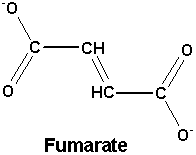Talk:Fumarates
A fumarated substance is a chemical formulated into a fumaric acid salt. This is done for the purpose of either increasing the chemical's bioavailability, its stability, or ease-of-access.
Hydrochloride and fumarated substances are very similar with the exception that hydrochlorides tend to have a slightly higher purity rate than fumarates because the hydrochloric acid has a lower mass than fumaric acid. A prominent example of a fumarate substance versus their hydrochlorinated form is seen with crack-cocaine as a freebase salt versus what is sold as cocaine powder that is cocaine hydrochloride. It is uncommon to see marketed research chemicals sold in hydrochloride form.
It is unknown whether these chemicals are made into fumarate salt specifically for higher bioavailability by smoking or if there are pharmacological research advantages to having the chemical in a fumarase salt. One major example of a fumarate substance is crack-cocaine which is cocaine as a freebase salt unlike cocaine powder, which is cocaine hydrochloride (HCl)
Examples
Many substituted tryptamines sold by online vendors are in a fumarase salt, such as 4-AcO-DMT and 4-HO-MiPT. The most prominent example of a fumarate substance is crack rock cocaine, which is cocaine as a freebase salt. What is sold as cocaine powder is, in most cases, cocaine hydrochloride. A medical example of a fumarate salt is in quetiapine fumarate (Seroquel and Seroquel XR). Quetiapine is used for the management of psychotic episodes associated with disorders such as schizophrenia and to reduce manic and depressive episodes and intensity in people with bipolar disorder. Sometimes, quetiapine is also used with an antidepressant for major depressive disorder.
See also
External links
References
This article does not cite enough references. You can help by adding some. |
